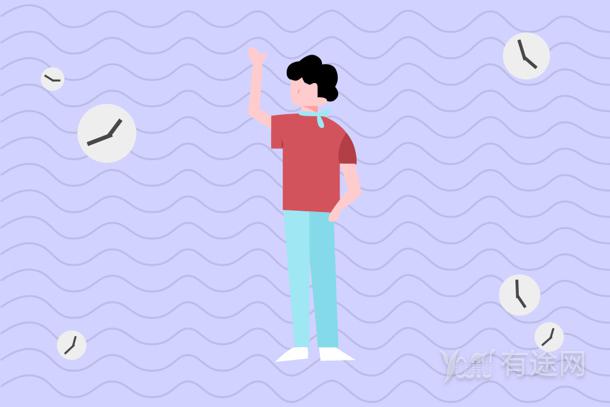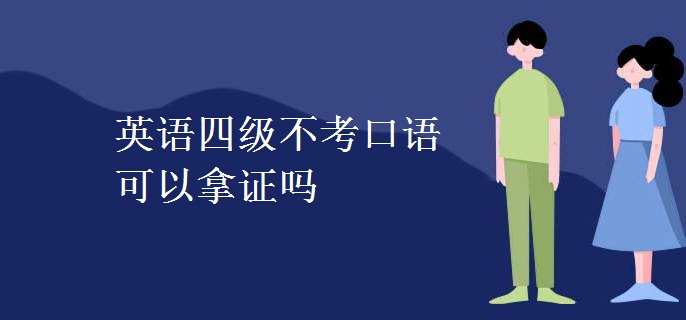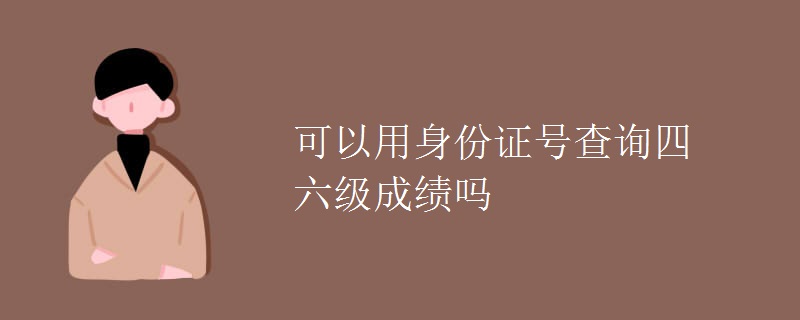Section C
Directions: In this section, you will hear three passages. At the end of each passage, you will hear three or four questions. Both the passage and the questions will be spoken only once.After you hear a question, you must choose the best ansuwer. from the four choices marked A), B), C) and D). Then mark the corresponding letter on Ansuer Sheet 1 with a single line through the centre.
Questions 16 to 18 are based on the passage you have just heard.
16. A) Reading books of wisdom.
B) Tidying up one's home.
C) Sharing with others.
D) Donating to charity.
17. A) Things that make one happy.
B) Things that are becoming rare.
C) Things that occupy lttle space.
D) Things that cost a lot of money.
18. A) It joined the city's clean-up campaign.
B) It sold as many as fty boxes of books.
C) It received an incredibly large number of donated books.
D) It did lttle business because of the unusual cold weather.
Questions 19 to 21 are based on the passage you have just heard.
19. A) Give free meals to the homeless.
B) Provide shelter for the homeless.
C) Help the vulnerable to cook lunches.
D) Call for change in the local government.
20. A) Strengthen co-operation.
C) Win national support.
B) Promote understanding.
D) Follow his exarmple.
21. A) Spreading news of his deeds.
B) Writing him thank-you notes.
C) Following the example he sets.
D) Sending him hand- made bags.
Questions 22 to 25 are based on the passage you have just heard.
22. A) To solve word search puzzles.
B) To send smartphone messages.
C) To test their eyesight using a phone app.
D) To install some audio equipment in a lab.
23. A) They could not go on until the ringing stopped.
B) They could no longer concentrate on their task.
C) They grabbed the phone and called back right away.
D) They asked their experimenter to hang up the phone.
24. A) A rise In emotional problems.
B) A decline in sports activities.
C) A reduction in the amount of sleep.
D) A decline in academuc perforance.
25. A) Protect the eyesight of the younger generation.
B) Take effective measures to raise productivity.
C) Realize the disruptive effects of technology.
D) Ensure they have suffcient sleep every day.
Part Ⅲ Reading Comprehension (40 minutes)
Section A
Directions: In this section, there is a passage with ten blanks. You are required to select one word for each blank from a list of choices given in a word bankt following the passage.Read the passage through canfully before making your choices. Bach choice in the bank is identified by a letter. Please mark the corresponding letter for each item on Ansuer Sheet 2 with a single line through the centre. You may not use any of the wornds in the bankt more than once.
There're three main types of financial stress people encounter. The first type is apparent in people being stressed about the 26______ups and downs of investunent markets actually not so much the ups,but 27______ the downs. These people are usually unable or unprepared to endure the long haul.
The next common type of financial stress is that caused by debt. In a 28______percentage of cases of debt- induced financial stress, credit cards and loans will be a central element. Often there'll be a car loan and perhaps a mortgage, but credit cards often seem to be the gateway to debt related financial difculties for many.
The third type of stress and 29______ the least known is inherited fnancial stress, which is the most destructive. It is experienced by those who have grown up in households where their parents regularly 30______and fought about money. Money therefore becomes a stressful topic, and so the thought of sitting down and planning is an unattractive 31______
Those suffering inherited financial anciety 32______to follow one of two patterns. Either they put their head in the sand: they would 33______exarmining their financial statements, budgeting,and discussing fnancial matters with those closest to them. Alternatiely,they would go to the other,and micro-analyze everything, to the point of complete They're convinced that whatever decision they make will be the wrong one.
A) appearance
B) argued
C) avoid
D) considerable
E) definitely
F) extreme
G) inaction
H) incredibly
I) normal
J) possibly
K) proposition
L) rebelled
M) statement
N) tend
O) traditional
Section B
Directions: In this section, you are going to read a passage writh ten statements attached to it. Each statement contains information given in one of the paragmaphs. Identify the paragraph from which the information is derived. You may choose a paragraph mone than once. Each paragraph is manked with a letter. Ansuwer the questioms by manking the corresponding letter om Ansuer Sheet 2.
Doctor's orders: Let children just play
A) Imagine a dnug that could enhance a child's creativity and critical thinking. Imagine that this drug were simple to make, safe to take, and could be had for free. The nation's leading pediatricians say this miracle compound exists. In a new clinical report, they are urging doctors to prescribe it liberally to the children in their care.
B)“This may seem old-fashioned, but there are skills to be leamed when kids aren't told what to do,said Dr.Michael Yogman, a Harvard Medical School pediatrician who led the drafting of the call to arms. Whether it's rough physical play, outdoor play or pretend play, kids derive important lessons from the chance to make things up as they go, he said.
C) The advice, issued Monday by the American Academy of Pediatrics, may come as a shock to some parents. After spending years fretting over which toys to buy, which apps to download and which skill-building programs如o send their kids to after school, letting them simply play or better yet, playing with them- could seem like a step backward. The pediatricians insist that it's not. The academy's guidance does not include specific recommendations for the dosing of play. Instead, it asks doctors to advise parents before their babies tum two that play is essential to healthy development.
D)“Play is not silly behavior,”the academy's report declares.It fosters children's creativity,cooperation, and problem- solving slills- all of which are critical for a 2lst century workforce.When parents engage in play with their children, it builds a wall against the harmful effects of all kinds of stress , including poverty, the academy says. In the pediatricians' view, essentially every life skill that's valued in adults can be built up with play.“ Collaboration, negotiation, decision-making,creativity, leadership, and increased physical activity are just some of the skills and benefts children gain through play," they wrote. The pediatricians' appeal comes as kids are being squeezed by increasing academic demands at school and the constant invasion of digital media.
E) The trends have been a long time coming. Between 1981 and 1997, detailed time use studies showed that the time children spent at play declined by 25 percent. Since the adoption of sweeping education reforms in 2001,public schools have steadily increased the amount of time devoted to preparing for
standardized tests. The focus on academic“skill and drills" has cut deeply into recess
and other time for free play.
F) By 2009, a study of Los Angeles kindergarten classrooms found that five year-olds were so burdened with academic requirements that they were down to an average of just 19 minutes per day of“choice time," when they were permitted to play freely with blocks, toys or other children.One in four Los Angeles teachers reported there was no time at all for“ free play.”Increased academic pressures have left 30 percent of U. S. kindergarten classes without any recess. Such findings prompted the American Academy of Pediatrics to issue a policy statement in 2013 on the“crucial role of recess in school.”
G) Pediatricians aren't the only ones who have noticed. In a report titled“Crisis in the Kindergarten,"a group of educators, health professionals and child advocates called the loss of play in early childhood“a tragedy, both for the children themselves and for our nation and the world.”Kids in play-based kindergartens“ end up equally good or better at reading and other intellectual skills,and they are more likely to become well- adjusted healthy people," the Alliance for Childhood said in 2009.Indeed, new research demonstrates why playing with blocks might have been time better spent, Yogman said. The trial asssed the effectiveness of an early mathematics intervention aimed a tpreschoolers.The results showed almost no gains in math achievement.
H) Another playtime thief: the growing proportion of kids' time spent in front of screens and digital devices, even among preschoolers. Last year, Common Sense Media reported that children up through age eight spent an average of two hours and 19 minutes in front of screens each day,including an average of 42 minutes a day for those under two. This increase of digital use comes with rising risks of obesity, sleep deprivation and cogmnitioe,language and social-emotional delays, the American Academy of Pediatrics warmed in 2016.
I)“I respect that parents have busy lives and it's easy to hand a child an iPhone," Yogman said.“But there's a cost to that. For young children, it's much too passive. And kids really leam better when they're actively engaged and have to really discover things.
J) The decline of play is a special hazard for the roughly 1 in 5 children in the United States who live in poverty. These 14 million children most urgently need to develop the resilience that is cultivated with play. Instead, Yogman said, they are disproportionately affected by some of the trends that are making play scarce:academic pressures at schools that need to improve test scores,outside play areas that are limited or unsafe, and parents who lack the time or energy to share in playtime.
K) Yogman also worries about the pressures that squeeze playtime for more affluent kids. “The notion that as parents we need to schedule every minute of their time is not doing them a great service," he said. Even well-meaning parents may be“robbing them of the opportunity to have that joy of discovery and curiosity- -the opportunity如o find things out on their own.
L) Play may not be a hard sell to kids. But UCLA pediatrician Carlos Lerner acknowledged that the pediaticians' new prescription may meet with skepticism from parents, who are anxious for advice on how to give their kids a leg up in the world. They should welcome the simplicity of the message, Lemner said.“It's liberating to be able to offer them this advice: that you spending time with your child and letting him play is one of the most valuable things you can do," he said.“It doesn't have to involve spending a lot of money or time , or joining a parenting group. It's something we can offer that's achievable. They just don't recognize it right now as particularly valuable. ”
36.Increased use of digital devices steals away children's playtime.
37.Since the beginning of this century, an increasing amount of time has been shifted in public schools from recess to academic activities.
38.It has been acknowledged that while kids may welcome pediatricians' recommendation, their parents may doubt its feasibility.
39.According to some professionals, deprivation of young children's playtime will do harm not only to children themselves but to the country and the world.
40.By playing with children, parents can prevent them from being harmed by stress.
41.Playing with digital devices discourages kds from active discovery, according to pediatrician Dr. Michael Yogman.
42.The suggestion of letting children simply play may sound like going backwards to parents who want to help build their children's skills.
43. Dr. Michael Yogman believes the idea that parents should carefully schedule children's time may not be helpful to their growth.
44. One quarter of teachers in an American city said that children in kindergartens had no time for playing freely.
45. According to a pediatrician, no matter what kind of play children engage in, they are leaming how to create things.
Section C
Directions: There are 2 passages in this section. Each passage is followed by some questions or unfinished statements. For each of them there are four choices markedA), B), C)and D).You should decide on the best choice and mank the corresponding letter on Ansuer
Sheet 2 with a single line through the centre.
Paasage One
Questions 46 to 50 are based on the following passage.
Americans spend bilions of dollars each year trying to change their weight with diets, gym memberships and plastic surgery.
Trying to live uψ to the images of“perfect" models and movie heroes has a dark side: anxiety,depression, as well as unhealthy strategies for weight loss or muscle gain. It also has a fnancial cost.Having an eating disorder boosts arnual health care costs by nearly US $2 000 per person.
Why is there both extemal and internal pressure to look “ perfect"? One reason is that society rewards people who are thin and healthy-looking. Researchers have shown that body mass index is related to wages and income. Especially for women, there is a clear penalty at work for being overweight or obese. Some studies have also found an impact for men, though a less noticeable one.
While the research literature is clear that labor market success is partly based on how employers and customers perceive your body image, no one had explored the other side of the question.Does a person's own perception of body image matter to earmings and other indicators of success in the workplace?
Our recently published study answered this question by tracling a large national random sarmple of Americans over a critical time period when bodies change from teenage shape into adult form and when people build their identities.
As in other research, women in our sample tend to over-perceive their weight they think they're heavier than they are- -while men tend to under-perceive theirs.
We found no relationship between the average person's self-perception of weight and labor market outcomes,although self-perceived weight can influence self- esteem, mental health and health behaviors.
While the continued gender penalty in the labor market is frustrating, our finding that misperceived weight does not harm workers is more heartening.
Since employers' perception of weight is what matters in the labor market,changing discrimination laws to include body type as a category would help. Michigan is the only state that prohibits discrimination on the basis of weight and height. We believe expanding such protections would make the labor market more fair and efficient.
46. What does the author say may have an adverse impact on people?
A) Undergoing plastic surgeries in pursuit of beauty.
B) Imitating the lifestyles of heroes and role models.
C) Striving to achieve perfection regardless of financial cost.
D) Attempting to meet society's expectation of appearance.
47. What have researchers found out about people's eamings?
A) They are closely related to people's social status.
B) They have to do with people's body weight and shape.
C) They seem to matter much less to men than to women.
D) They may not be equal to people's contributions.
48. What does the author's recent study focus on?
A) Previous literature on indicators of competitiveness in the workplace.
B) Traits that matter most in one's pursuit of success in the labor market.
C) Whether self-perception of body image impacts one's workplace success.
D) How bosses' perception of body image impacts employees' advancement.
49. What is the finding of the author's recent research?
A) Being overweight actually does not do much harm to the overall well-being of employees.
B) People are not adversely affected in the workplace by false self-perception of body weight.
C) Self-esteem helps to combat gender inequality in the workplace.
D) Gender inequality continues to fnustrate a lot of female employees.
50. What does the author think would help improve the situation in the labor market?
A) Banning discrimination on the basis of employees' body image.
B) Expanding protection of women against gender discrimination.
C) Helping employees change their own perception of beauty.
D) Excluding body shape as a category in the labor contract.
Passage Two
Questions 51 to 55 are based on the following paasage.
The work-life balance is dead. By this, I'm not advocating that you should give up your pursuit of having a fulblling career and a thriving personal life, and I'm definitely not saying that you have to give up one to have the other. I also acknowledge that we have a work-life problem, but T'm arguing that the concept of balance has never been helpful, because it's too limiting. You see, our language makes a difference, and how we refer to things matters because it affects our thinking and therefore our actions.
At the minimum, most of us work because we want如be able to support ourselves , our fanilies,and the people around us. In the ideal world, we're all doing work that we're proud of and that provides meaning and purpose to us. But even if your job doesn't give you shivers of joy each new day, working is a part of what each of us does and the contribution we make to society. When you separate work and life, it's a lttle bit harder to make that connection.But when you think of work as part of a full life and a complete experience, it becomes easier to see that success in one aspect often supports another.
Losing your balance and falling isn't pleasant. A goal to balance suggests that things could quickly get off balance, and that causes terible outcomes. It's more constructive to think of solutions that continue to evolve over shifts in life and work. Rather than falling or failing, you may have good days or better days or not-so-good days. These variations are normal, and it's more useful to think of life as something that is ever evolving and changing, rather than a high-risk enterprise where things could go wrong with one misstep.
How we tlk to ourselves matters, and how we talk about issues makes a difference. Let's bury “work-life balance”and think bigger and better about work-life fulfllment to do a little less balancing and a lot more living.
51. What does the author suggest by saying“The work-life balance is dead"?
A) The hope of achieving a thriving life is impossible to realize.
B) The pursuit of a ful6lling career involves personal sacrifice.
C) The imbalance between work and life simply doesn't exist anymore.
D) The concept of work-life balance contributes lttle to a flflling life.
52. What does the author say about our use of language?
A) It impacts how we think and behave.
C) It reflects how we communicate.
B) It changes with the passage of time.
D) It differs from person to person.
53. What does the author say we do in an ideal world?
A) We do work that betters the lives of our families and friends.
B) We do work that gives us bursts of joy each new day.
C) We do meaningful work that contributes to society.
D) We do demanding work that brings our capacity into full play.
54. What does the author say about life?
A) It is cyclical.
C) It is fuflling.
B) It is dynamic.
D) It is risky.
55. What does the author advise us to do?
A) Make life as simple as possible.
C) Balance life and work in a new way.
B) Talk about balance in simpler terms.
D) Strive for a more fulflling life.

英语四级包括写作、听力理解、阅读理解和翻译四个部分,翻译和作文各占据英语四级的15%,满分分别是106.5分。那么具体的评分标准是什么呢?下...

2021年12月大学英语四六级笔试考试时间为12月18日,口试考试时间是11月20-21日,12月1日9:00起打印准考证。

四级作文满分为15分,成绩分为六个档次:13-15分、10-12分、7-9分、4-6分、1-3分和0分。评分标准主要有是否切题;文章是否通顺...

四级英语作文万能句型有There is no Ving,There is no way of Ving,There is no possib...

离四级考试越来越近了,作文模板开始背了没?还没开始的小伙伴可得抓紧时间了,下面,就是小编为大家准备的万能模板,希望能帮助到你哦。

2021下半年CET考试时间为12月18日,开考科目为英语四级和六级。CET-SET考试时间为11月20日至21日,20日开考英语口语四级,...

2021年下半年英语四六级考试时间安排在12月18日,上午考四级,下午考六级。口试考试时间安排在11月20日-21日,20日考四级口语,21...

不考口语可以拿到四级成绩单。四级口语考试不是强制性的,考生自愿参加,不参加口语考试同样有四级成绩单。如考生仅参加笔试,成绩报告单照常发放,口...

2021年12月大学英语四六级考试时间为12月18日,12月1日9:00起,考生可自行登录全国大学英语四、六级考试网站首页,通过快速打印准考...

可以自己在网上报名。有的学校是班级组织统一报名,有的学校是自己在网上进行报名。英语四级考试对象限制在普通高校内部四年制或以上根据教育大纲修完...

不可以在手机上报名。四六级在网上报名,学校会统一在一个时间段内,安排学生进行网上报名。四六级报名及缴费都是在网上进行,缴费完成以后才算是报名...

不可以。我国英语水平能力考试中四、六的报名条件有着限制,四、六级主要为全国高校本专科、成人教育本、专科等设立,在四级成绩合格后可以报考六级。...

可以考。英语四六级考试对象限制在普通高校内部四年制或以上根据教育大纲修完大学英语四级的在校大学本科生或研究生。同等程度的大专生或硕士研究生经...

四六级成绩不能用身份证号查。英语四级成绩查询必备是姓名和准考证号,身份证号对于查分是没有用处的。大学英语四、六级考试作为一项全国性的教学考试...

一年有2次。大学英语四级的考试时间通常情况下为每年6月份和12月份,一般情况下,6月份的考试在3月初开放报名,12月份的考试在9月初开放报名...